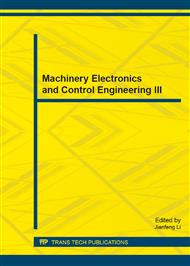p.920
p.924
p.928
p.932
p.936
p.941
p.947
p.951
p.955
Passive Distributed Clustering Scheme in Wireless Sensor Networks
Abstract:
Energy efficiency is especially important for the cluster of the wireless sensor network (WSN). This paper studies how to increase availability and survivability of WSN by selecting a suitable cluster head. For this purpose, we propose a passive distributed clustering scheme (PDCS), to promote the efficiency of energy utilization. In PDCS, both the relative distance and the residual energy are taken into consideration for cluster head selection. Simulation results present that PDCS has better performance than the well-known LEACH scheme.
Info:
Periodical:
Pages:
936-940
Citation:
Online since:
December 2013
Authors:
Keywords:
Price:
Сopyright:
© 2014 Trans Tech Publications Ltd. All Rights Reserved
Share:
Citation:


